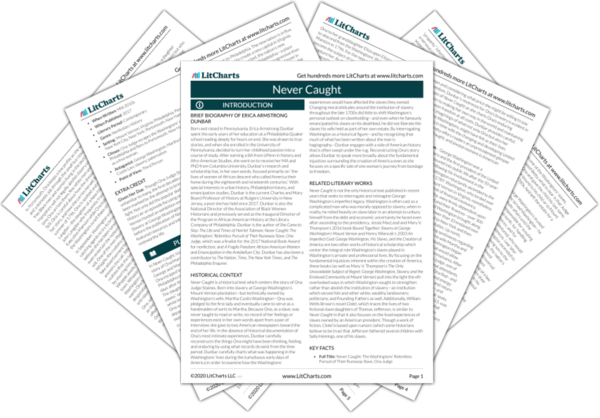Dunbar closes the book by commenting on the impossible, painful, emotionally fraught decisions Ona had to make in pursuit of freedom. Freedom, Dunbar suggests, came at much too high a price for Ona and countless men and women like her. Even while Ona lived, her legacy was already reverberating throughout her family and community—yet she never knew how profoundly her actions affected those who sought the same kind of liberation, freedom, and agency that she did.
